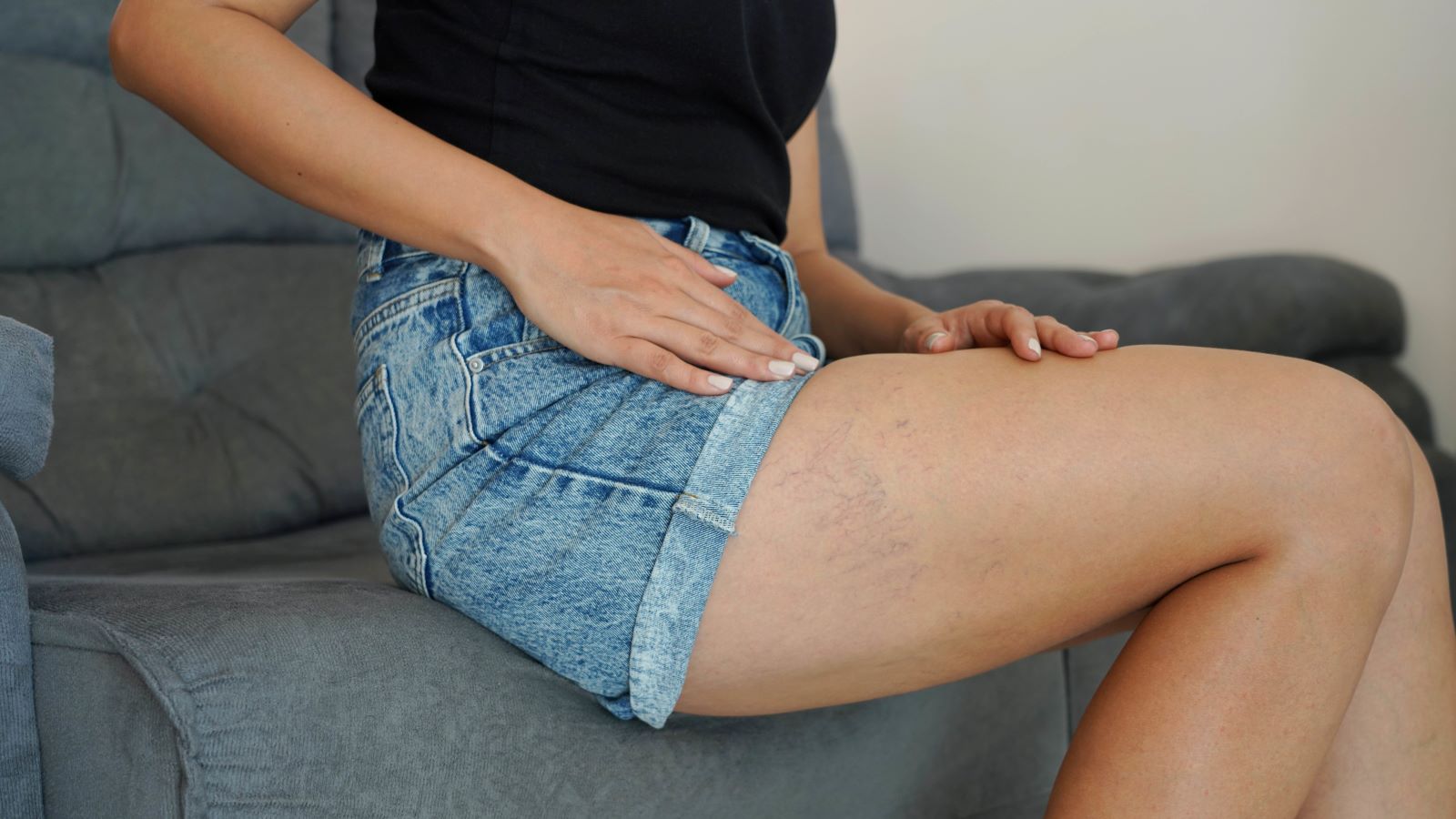Varicose veins might seem like just a cosmetic concern. But in reality, they can cause a lot of uncomfortable symptoms like aching, cramping and skin irritation.
Looking for treatment? We asked Stephanie Saltzberg, MD, a vascular surgeon at the Hartford HealthCare Heart & Vascular Institute, to walk through your varicose vein options.
How varicose veins form.
Varicose veins form when the valves in your veins, which help blood flow back to your heart, either weaken or fail. When this happens, blood pools in the vein, increasing pressure and causing them to stretch, twist and bulge.
Some risk factors for varicose veins include:
- Age: Over time, vein valves naturally weaken
- Gender: Women are more likely to have varicose veins because of hormonal changes during menstruation or menopause.
- Pregnancy: The extra volume of blood in the legs can put strain on veins.
- Lifestyle factors: Long periods of sitting or standing, lack of exercise or excess weight all raise your risk.
- Genetics: A family history can make varicose veins more likely.
5 treatments for varicose veins
Varicose veins affect around one-third of adults, but you don’t have to live with them. Here are 5 treatment options:
1. Compression stockings
Compression stockings are usually the first thing to try when you’re dealing with varicose veins.
“These specially designed socks apply gentle pressure to your legs, helping veins and leg muscles move blood more efficiently,” explains Dr. Saltzberg.
That added support can ease pain, reduce swelling and improve circulation – all without invasive procedures.
> Related: 6 Ways to Prevent Deep Vein Thrombosis
2. Sclerotherapy
For smaller varicose veins or spider veins, sclerotherapy is a popular and effective option.
This quick procedure injects a solution directly into the affected vein, causing it to scar, collapse and gradually fade.
“Sclerotherapy is minimally invasive and works well for veins near the surface,” says Dr. Saltzberg. “Most people just need a few sessions for the best results, and there’s no downtime to worry about.”
This makes it a great entry point for varicose veins treatment, especially for those seeking relief without surgery.
3. Endovenous ablation therapy
If you have larger varicose veins that cause a lot of discomfort, endovenous ablation can offer lasting relief.
The procedure uses radiofrequency or laser energy to heat and seal off the problem vein. A thin catheter is guided into the vein, and once it’s closed, blood naturally reroutes to healthier ones.
“It’s a great choice for larger veins,” says Dr. Saltzberg. “And because it’s done through a tiny incision, recovery is typically fast.”
Want a Weekly Dose of Health News?
Sign up for newsletters4. Microphlebectomy
If varicose veins are large, painful or causing complications, another option may be microphlebectomy.
In this procedure, surface varicose veins are removed or tied off to restore healthy blood flow.
5. Open venous surgery.
Although rare, open venous surgery may be the right option for you.
“For people with severe symptoms or more advanced cases, open venous surgery can offer long-term relief when other treatments haven’t worked,” says Dr. Saltzberg.
When to see your doctor.
If you’re dealing with persistent leg pain, swelling, heaviness or skin changes around your varicose veins, check in with your doctor.
“Have this conversation early,” says Dr. Saltzberg. “That way, we can prevent complications and get you started on the right treatments to help you feel more comfortable sooner rather than later.”



